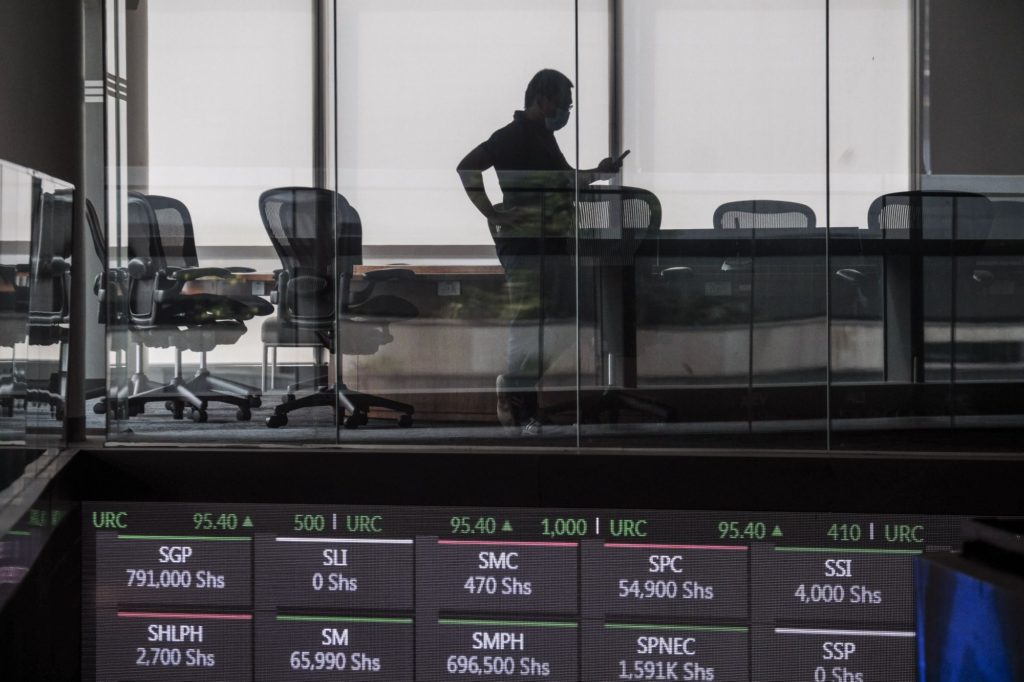The dollar soared after the White House talked down the prospect of a currency agreement to weaken the greenback and equities extended declines in Asia after hawkish comments from Federal Reserve policymakers.
(Bloomberg) — The dollar soared after the White House talked down the prospect of a currency agreement to weaken the greenback and equities extended declines in Asia after hawkish comments from Federal Reserve policymakers.
Global stocks were headed for the lowest level in almost two years as major market levels crumbled. Hong Kong’s Hang Seng benchmark was at a decade low, the yield on 10-year Treasuries breached 4% for the first time since 2010 and a gauge of the greenback set another all-time high.
European and US futures slid, extending a move that saw the S&P 500 cap its worst run since early 2020. Apple Inc. scrapped plans to increase iPhone production, further weighing on sentiment.
The dollar’s rally brought further loses to the pound and the euro, while the onshore yuan fell to the weakest level against the greenback since the global financial crisis in 2008. The yen remained near the key 145 mark versus the dollar and within sight of levels that have drawn intervention from Japan.
The moves in the Treasuries continues to reverberate through bond markets. The Bloomberg Global Aggregate Index of government and corporate bonds has lost more than 20% since end-December and is in the first bear market since its inception in 1990.
Australia’s 10-year yield reached a three-month high while Japan’s benchmark yield was untraded after closing at the upper limit of the central bank’s target band on Tuesday.
Read More: Stock Bear Market Will Get Whole Lot Worse When Credit Cracks
Fed official James Bullard reiterated the central bank’s determination to tame inflation with tighter monetary policy, increasing the divergence with Japan and China. The urgency in the tone from Bullard and his US colleagues also contrasts with the Bank of England, which looks like it will wait until the next scheduled meeting in November to address inflationary forces triggered by planned tax changes and government spending.
“The fact we have such a strong increase in US yields is attracting flows into the US dollar,” said Nanette Hechler-Fayd’herbe, chief investment officer of international wealth management for Credit Suisse Group AG. “As long as monetary and fiscal policy worldwide are really not coming to strengthen their own currencies, we should be anticipating a very strong dollar.”
Leaks to a gas pipeline between Russia and Western Europe were labeled as sabotage by US and German officials, ratcheting up friction with Vladimir Putin’s regime. Russia threatened to cut off gas to Ukraine’s allies in Europe and annexed a large chunk of Ukraine in the latest signs of escalating conflict.
European gas prices rose while worries about slowing global growth weighed on other raw materials, sending a Bloomberg index of commodity prices to the lowest level since February. West Texas Intermediate crude fell to around $77 per barrel. The stronger dollar and signs of growing US stockpiles countered speculation that OPEC+ will cut output.
Dollar strength and diverging interest rate policy has formed a “negative feedback loop” for commodities, Goldman Sachs Group Inc. analysts warned in a note. “Market liquidity has fallen, volatility has risen and investor confidence in the bullish commodity outlook has evaporated.”
How much damage is a strong dollar causing? That’s the theme of this week’s MLIV Pulse survey. It’s brief and we don’t collect your name or any contact information. Please click here to share your views.
Key events this week:
- Fed’s Mary Daly, Raphael Bostic, Charles Evans and ECB President Christine Lagarde speak at events, Wednesday
- Euro zone economic confidence, consumer confidence, Germany CPI, Thursday
- US initial jobless claims, GDP, Thursday
- Fed’s Loretta Mester, Mary Daly speak at events, Thursday
- China PMI, Friday
- Euro zone CPI, unemployment, Friday
- US consumer income , University of Michigan consumer sentiment, Friday
- Fed’s Lael Brainard and John Williams speak, Friday
Some of the main moves in markets:
Stocks
- S&P 500 futures fell 0.5% as of 7:17 a.m. in London. The S&P 500 declined 0.2%
- Nasdaq 100 futures lost 0.8%. The Nasdaq 100 rose 0.2%
- The Topix index dropped 1%
- Australia’s S&P/ASX 200 Index fell 0.5%
- The Kospi index slipped 2.5%
- The Hang Seng Index declined 2.5%
- Shanghai Composite Index fell 1%
- Euro Stoxx 50 futures dropped 0.8%
Currencies
- The Bloomberg Dollar Spot Index rose 0.3%
- The Japanese yen was little changed at 144.72 per dollar
- The euro slid 0.4% to at $0.9560
- The British pound fell 0.5% to $1.0683
- The offshore yuan fell 0.8% to 7.2341 to the dollar
Cryptocurrencies
- Bitcoin fell 1.3% to $18,818
- Ether dropped 3.0% to $1,285
Bonds
- The yield on 10-year Treasuries advanced three basis points to 3.97%
- Australia’s 10-year yield rose six basis points to 4.08%
Commodities
- West Texas Intermediate crude slid 1.5% to $77.36 a barrel
- Gold fell 0.3% to $1,623.22 an ounce
More stories like this are available on bloomberg.com
©2022 Bloomberg L.P.











